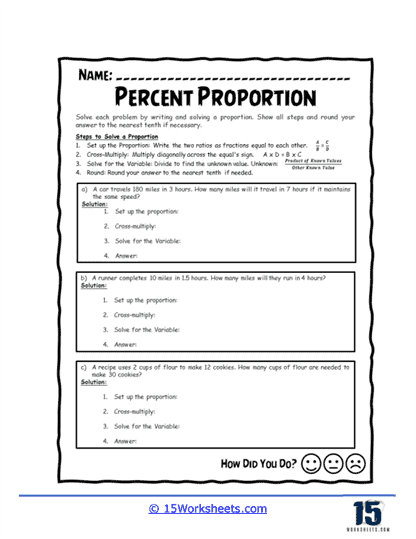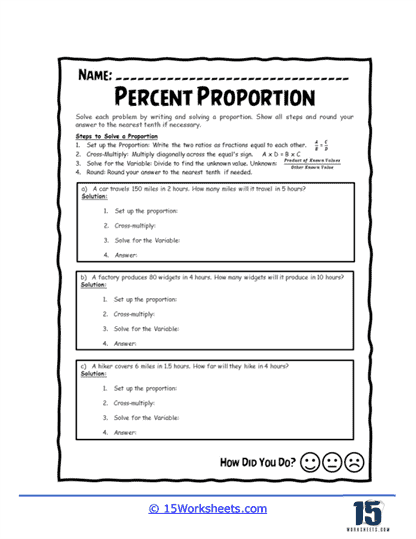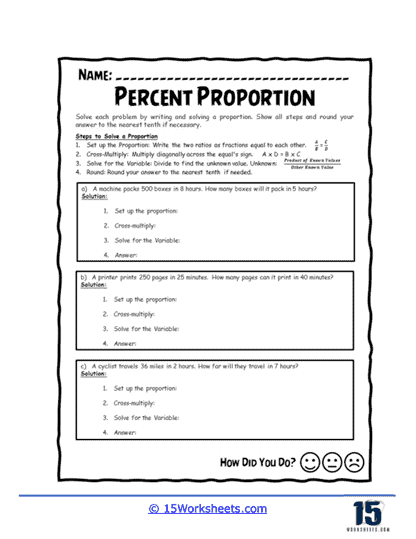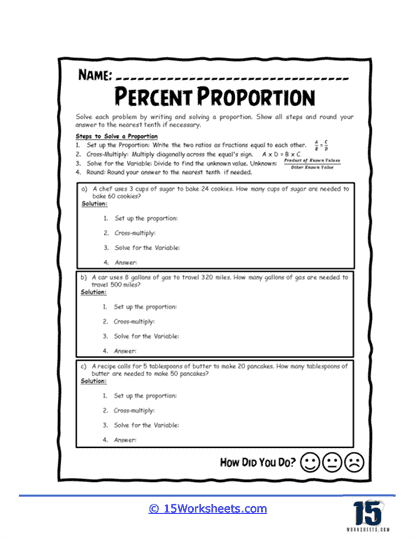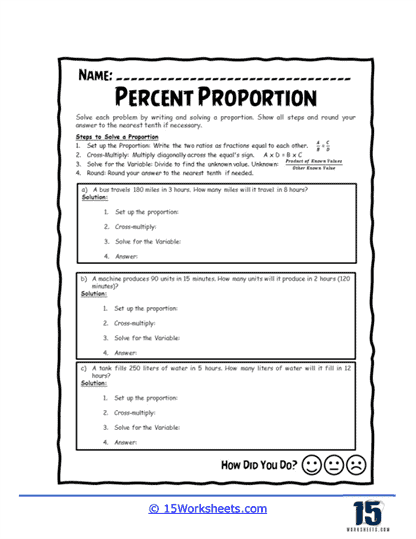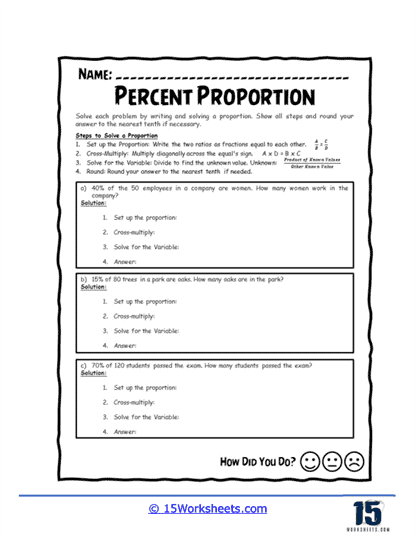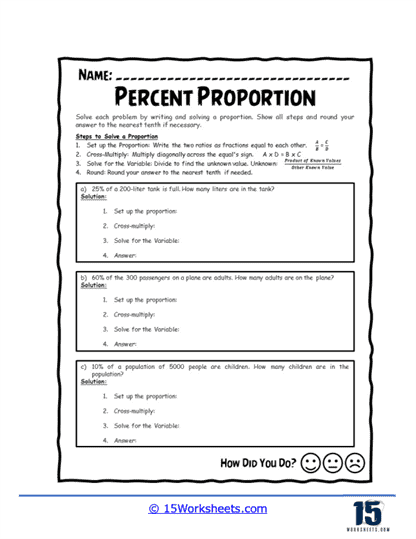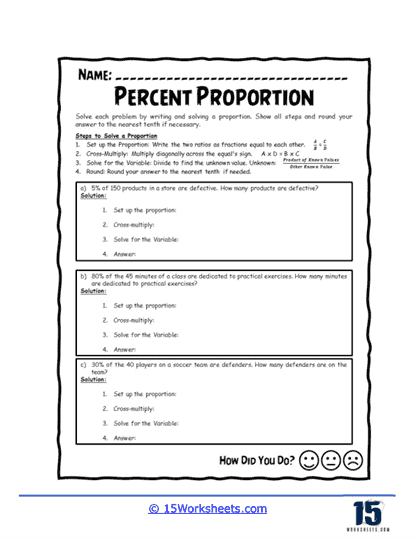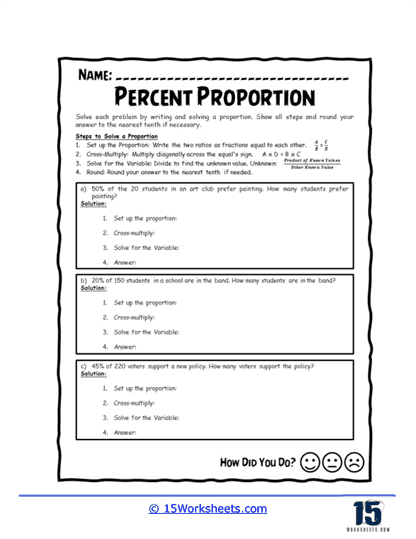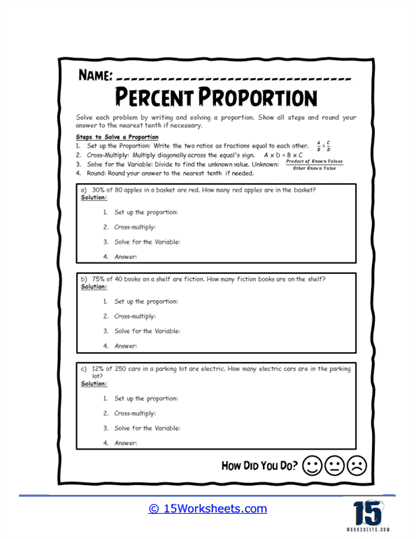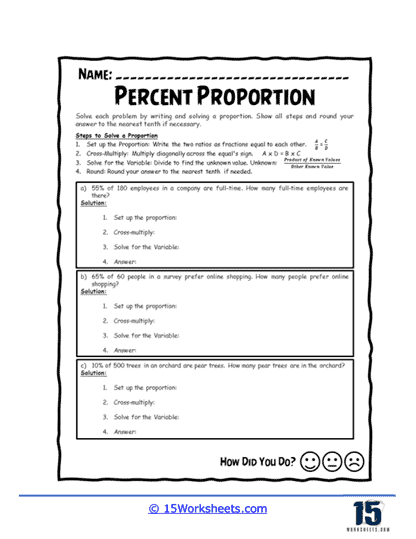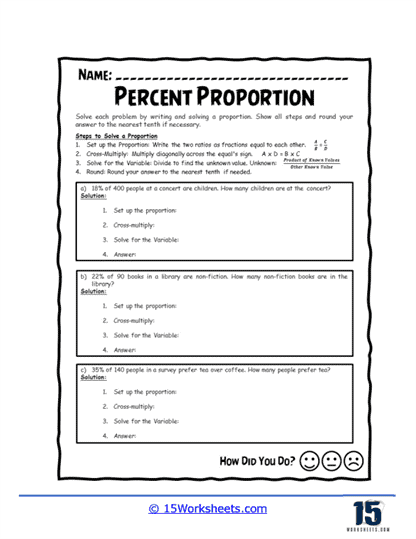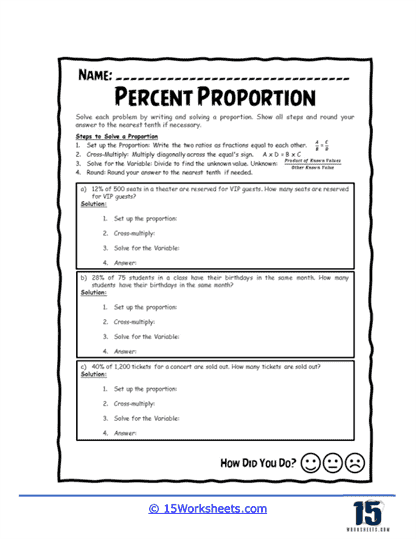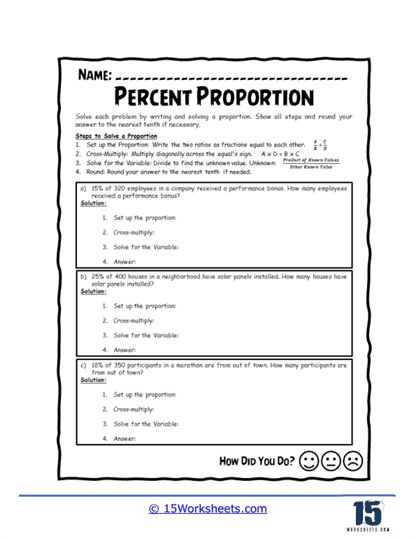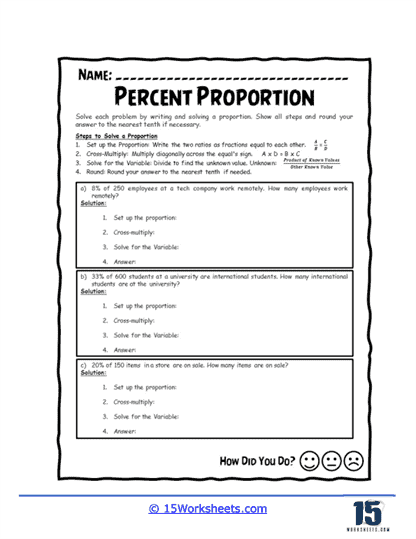Percent Proportion Worksheets
About These 15 Worksheets
These worksheets will help students understand and apply the concept of proportions in the context of percentages. These worksheets provide students with real-world problems that require them to set up and solve proportions. The problems are structured in a way that allows students to practice breaking down word problems into mathematical equations, cross-multiplying to solve, and interpreting their results. These worksheets emphasize not only solving equations but also understanding the practical applications of percentages in various scenarios.
The worksheets follow a very consistent format. They begin with a clear set of steps, guiding students through the process of setting up a proportion. The steps include establishing two equivalent ratios, cross-multiplying, and solving for the unknown variable. By using a step-by-step approach, these worksheets help students develop a solid understanding of how to work with proportions. Students are asked to set up the proportion, cross-multiply, and solve for the variable, reinforcing their understanding of each individual step before arriving at the final answer. This process is crucial in helping students master percent proportions, as it allows them to see the connection between fractions, ratios, and percentages.
One of the common problem types involves calculating distances or quantities based on a given percentage. For example, students might be asked how far a car will travel in a certain number of hours, based on a given speed, or how many miles a runner will complete in a shorter time frame. These problems focus on the application of proportions to calculate distance, time, or rate, reinforcing the concept that proportions can be used to scale quantities up or down. The worksheets often incorporate real-world scenarios, such as recipes or machinery output, giving students a practical context for the math they are learning.
Another type of problem found in these worksheets involves determining percentages in specific situations, such as calculating the percentage of employees in a company who are women, or the percentage of animals in a park. These problems help students understand how to calculate percentages from given data and apply that information to answer related questions. By focusing on practical scenarios, such as employee demographics or population data, the worksheets keep students engaged and encourage them to think critically about how percentages apply to everyday situations.
The worksheets also introduce students to problems involving groups and percentages, such as the percentage of students who passed a test or the percentage of trees in an orchard. These problems encourage students to apply their knowledge of percent proportions to larger groups, helping them understand how proportions and percentages can be used to compare different subsets of a whole. This type of problem builds a deeper understanding of how percentages function in various group settings, allowing students to analyze and interpret data more effectively.
In addition to real-world problems, the worksheets include more abstract problems that challenge students to think critically about how percentages and proportions relate to each other. For example, students might be asked how many employees in a company receive a performance bonus, based on a given percentage. These problems push students to apply their knowledge in less familiar contexts, reinforcing their understanding of the proportional relationships between different quantities.
The math skills taught in these percent proportion worksheets are comprehensive and cover a wide range of applications. Students learn how to set up proportions, cross-multiply, and solve for unknowns, which are essential skills in algebra and beyond. They also develop a deeper understanding of how to interpret and calculate percentages, which is a foundational math skill that will serve them well in various real-world situations.
These worksheets emphasize problem-solving and critical thinking, as students must carefully read and interpret word problems, extract the necessary information, and apply the correct mathematical steps. By providing a range of problem types, the worksheets help students develop the ability to approach percent proportion problems from different angles, ensuring they have a well-rounded understanding of the concept.
The format of these worksheets is designed to guide students through the process of solving percent proportion problems, making them an effective tool for both teaching and reinforcing these concepts. The clear, structured approach allows students to focus on the mathematical processes involved, while the real-world examples keep them engaged and motivated to learn.

